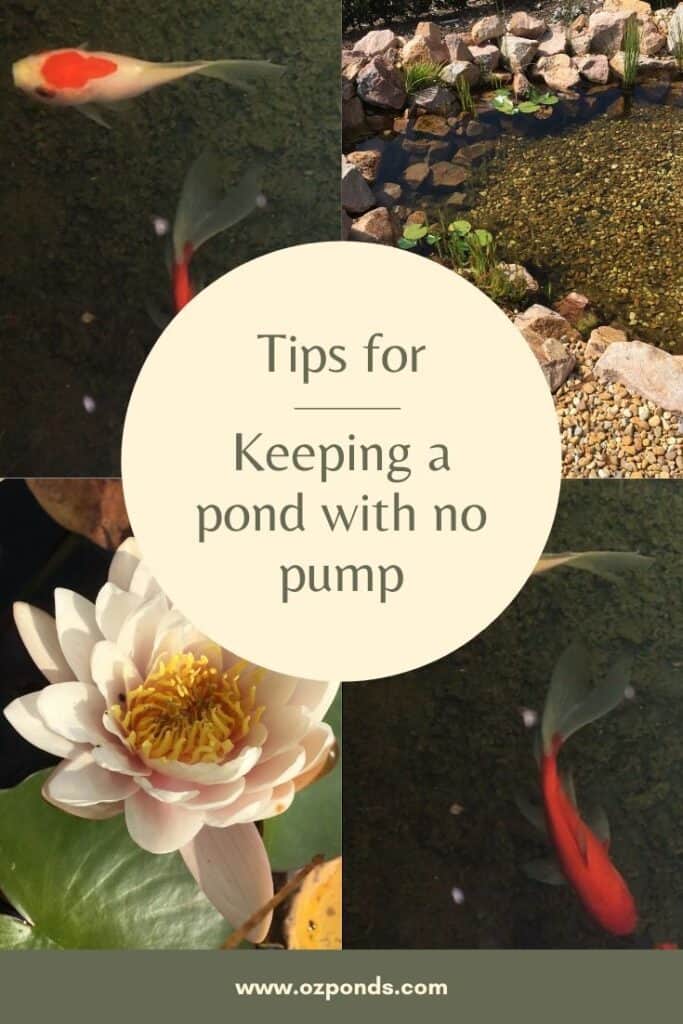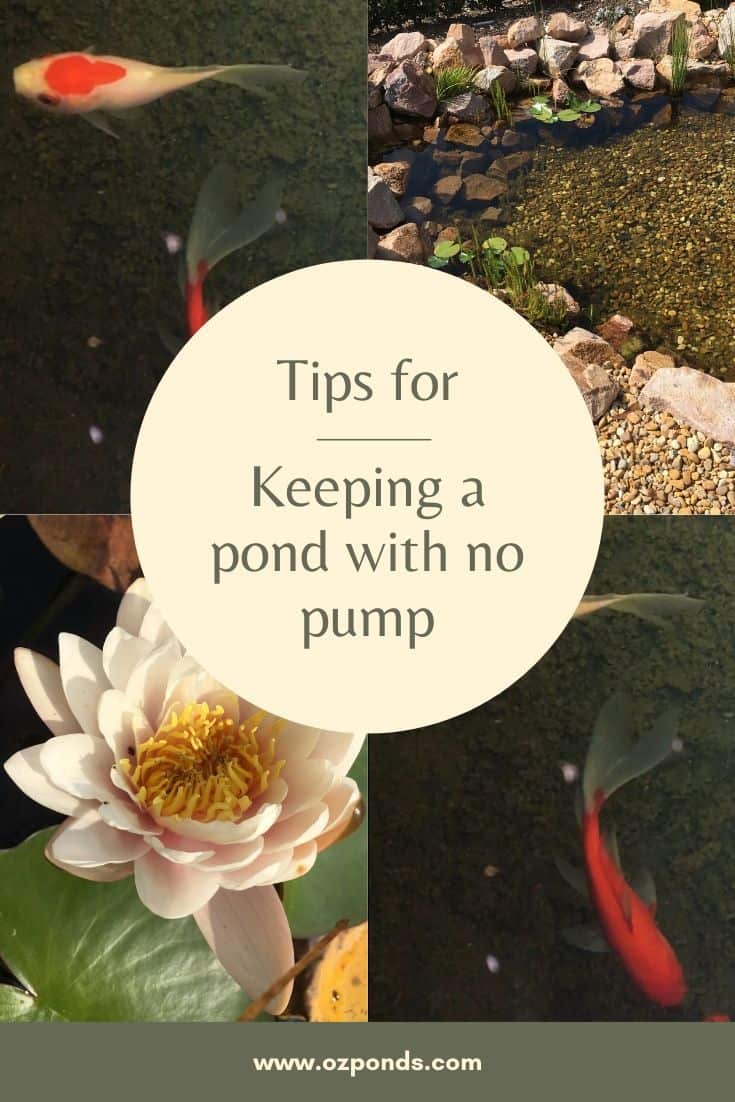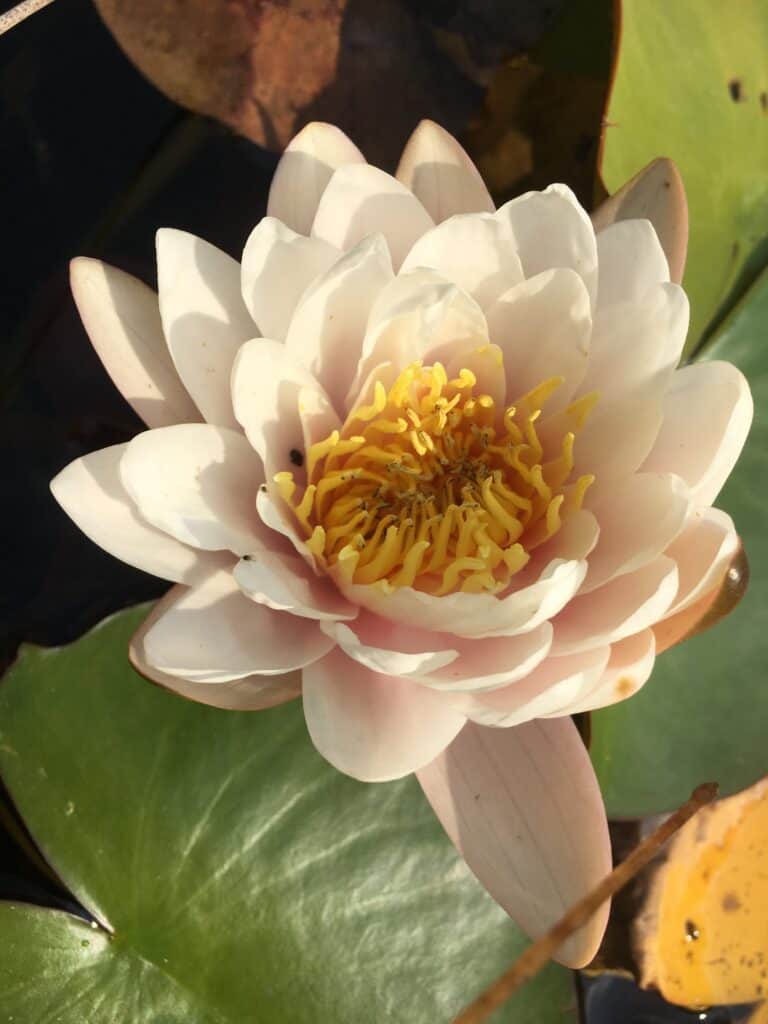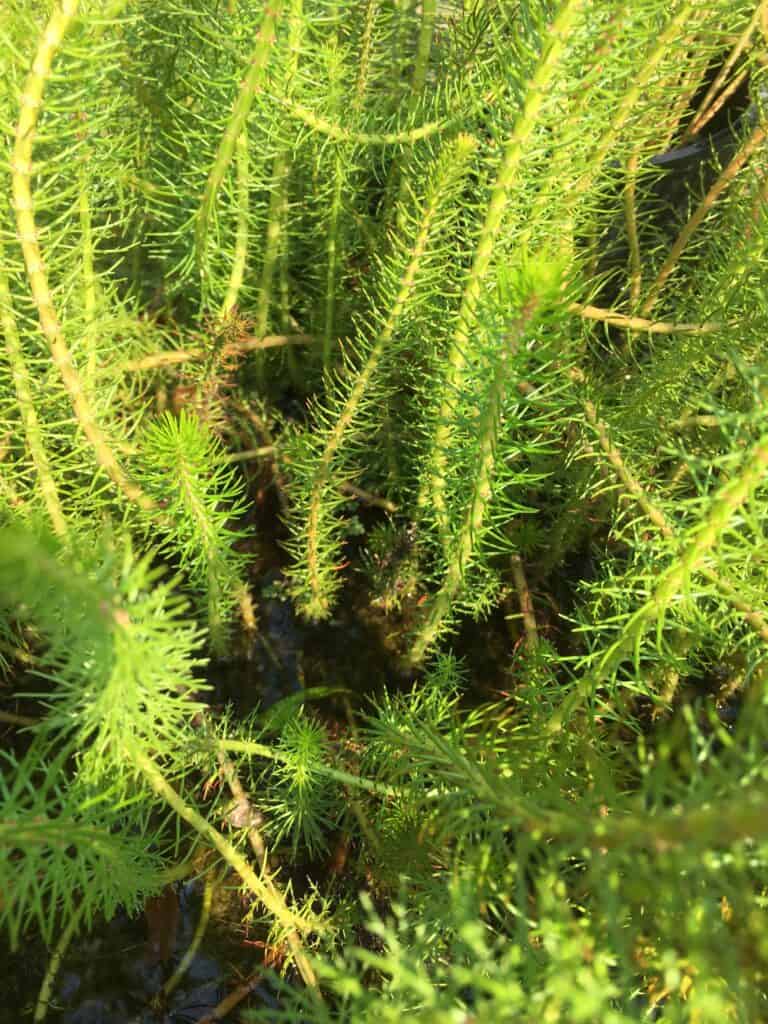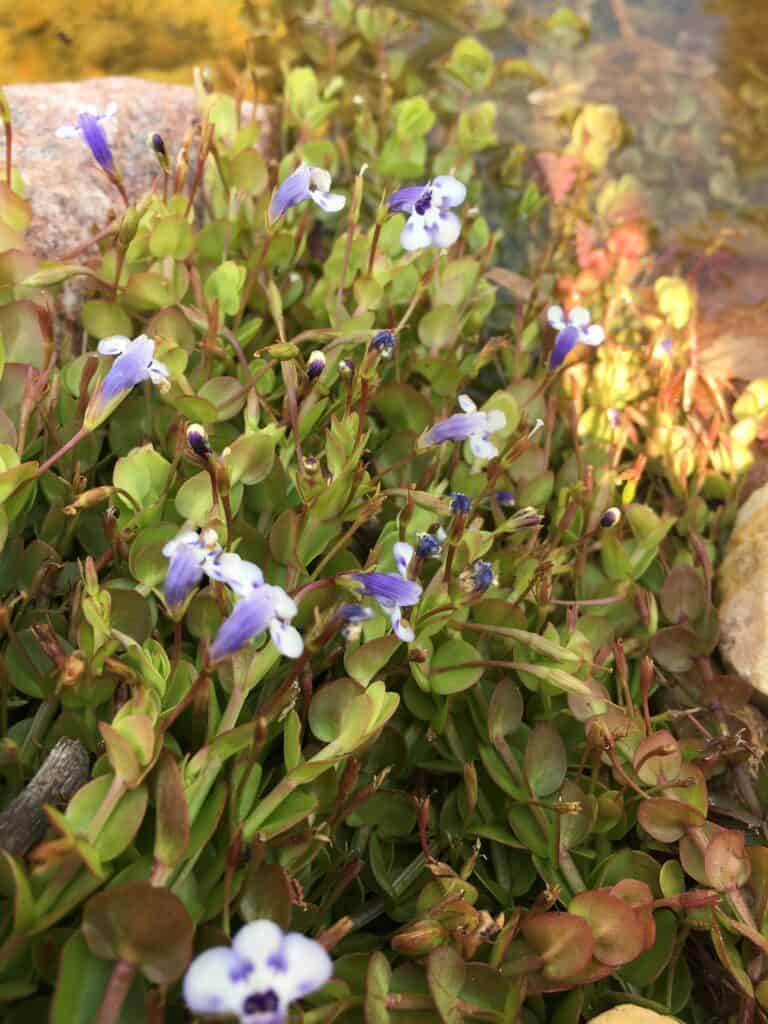If possible you should always use a pond pump. Water circulation is incredibly beneficial to any body of water.
However sometimes it just isn’t possible to provide electricity to the site of the pond.
If this is the case consider using a solar pump or oxygenator. These obviously won’t run 24/7. Some circulation and water agitation is better than none.
Another avenue to explore is the possibility of running low volt cable to the pond. I have successfully extended a low volt cable over 60m (196ft). Then you can run a low volt pond pump.
Also worth considering is using air. Im currently running an airline to a stagnant pond that is over 90m(295ft) from an electrical outlet. Ive just hooked up a 60L/hr compressor drawing 60W.
Like i said something is better than nothing. But if it’s totally impossible to add a pump, here are some tips to help you design a pond with no pump.
1.Depth
The depth of a pond with no pump should be at least 60cm (3ft) or more. Deeper water will remain more stable. Less fluctuations in pH and temperature.
A deeper pond will also allow the sludge to form a layer on the bottom without it being visible. A layer of sludge is going to be inevitable in a pond with no pump.
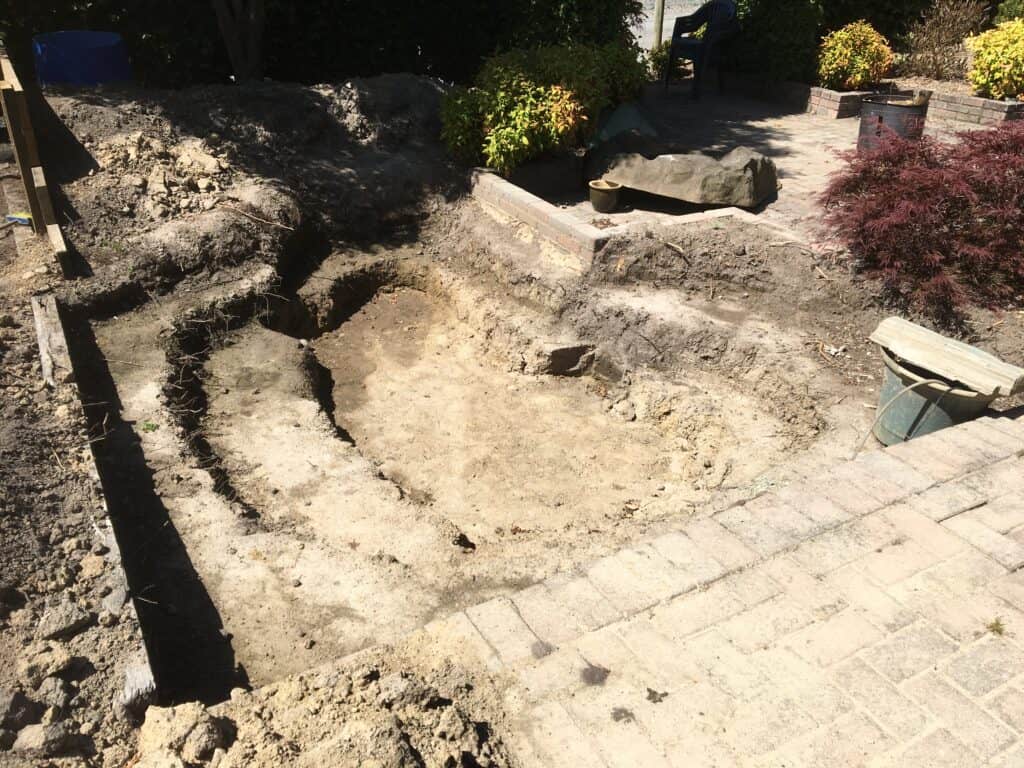
The sludge is a build up of anything that falls into the pond and sinks. Bacterias and micro-organisms will colonise this sludge layer. They will consume and process ammonia and nitrite that is released into the water.
This process is called the nitrogen cycle and is essential to maintaining a healthy pond. To learn more about the nitrogen cycle read my article- ‘a quick guide to the nitrogen cycle.’
Whilst digging the pond you’ll want to incorporate different ‘shelves’ or deeps. These will allows you to plant a wide variety of different water plants.
2. Add Rocks & pebbles
The nitrifying bacteria and micro-organisms require surfaces to grow on. More surface area = more good bacteria.
Rocks and pebbles are an excellent way of adding extra surface area for beneficial bacteria. Rocks and pebbles will also protect the pond liner!
Use large rocks on the walls of the pond (where you cut the shelves). Use small gravel on the flat areas and behind the the large rocks to help lock them in place.
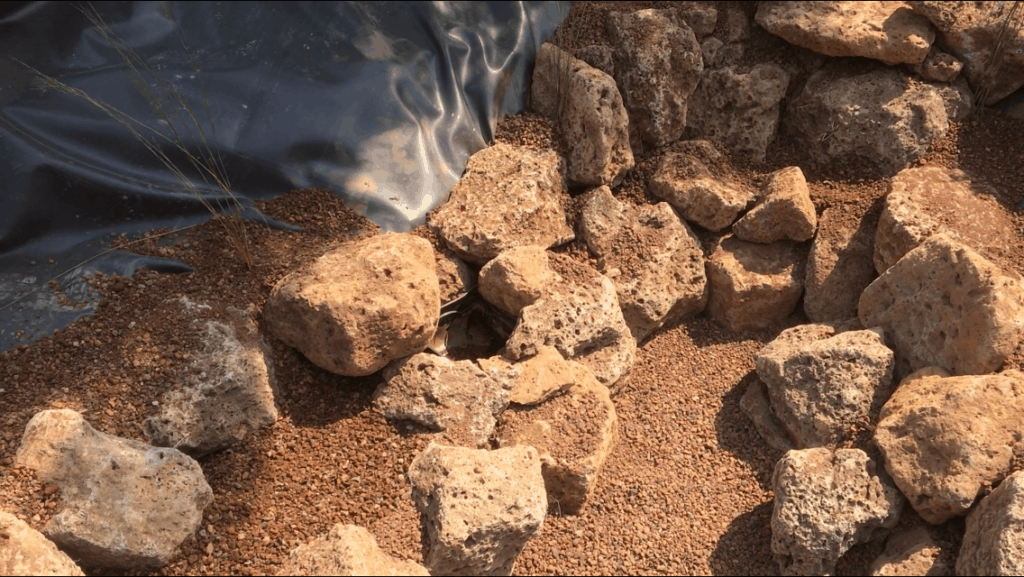
Rocks will create great habitat for fish, frogs, shrimp etc. Creating a well rounded ecosystem is the ultimate goal.
A nice balance of rocks, plants and even some drift wood can really make your pond look amazing!!
Into the pebbles is where we want to plant the water plants. Remove any soil from the roots. This will force the plants to remove nutrients directly from the water.
3. Add plenty of plants
If the beneficial bacteria is the workhorse of the system, then the plants are the guy holding the plough.
When adding your pond plants remember variety is the spice of life. Try to incorporate many different species. Something growing for every season is the goal.
Pond plants have a number of benefits:
- They will consume the nutrients in the water. Removing the nutrients will prevent excessive algae.
- Plant roots will add more surface area within the pond. The more surface area that is constantly wet the better. Good bacteria and micro-organisms will colonise all these surfaces.
- They can shade the water. Plants with floating leaves like water lilies create shade. The shade will help keep shallow water cooler. This is great as algae likes warm sunny water.
- Lastly they just make the pond look good. A well planted pond blends into the landscape so much better, than one without plants.
Quite often a pond with no pump is going to be in an area that receives runoff. This is good in that the pond is kept nice and full.
However runoff is high in nutrients. Add plenty of plants throughout the runoff zone.
Well planted areas through the runoff zone can help remove nutrients before the water reaches the pond. Think of them as mini wetlands.
4. Add fish
A pond with no pump should still have fish, just not too many.
Fish will add what’s called a bio load to your pond. This basically means that they will produce waste. The waste (and fish breathing) will release extra ammonia into the water.
The extra ammonia means you’ll need extra beneficial bacteria.
In a pond with a pump the water circulation allows water to be constantly moving over, around and through those surfaces that are home to the bacteria.
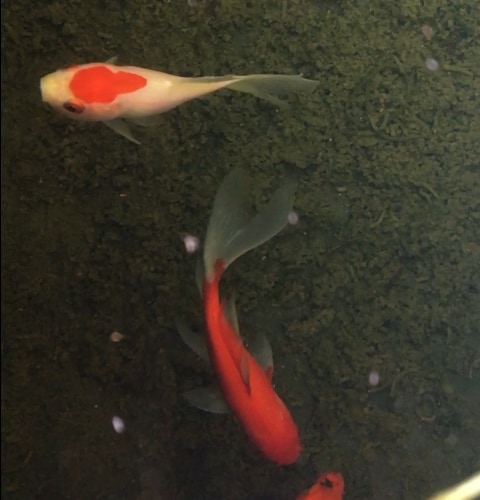
In a pond without a pump this isn’t occurring anywhere near as much, so be cautious and don’t add too many fish. They will always breed overtime anyways.
Start small and let them find the right population.
Fish are excellent for mosquito control i like native fish (to Australia) like rainbows and pygmy perch.
Small fish like white clouds will tolerate poor water conditions and are very common in the aquarium trade.
If using a non-native fish like white clouds ensure that there is no possibility of escape into local waterways.
5. Periodically remove the sludge in the pond
Overtime that layer of sludge on the bottom of the pond is going to get thicker and thicker.
If left unchecked the sediment will continue to build until you’re left with a bog and not a pond.
Every pond is different. Some will require this layer be removed yearly others almost never.
This can be done using a a dirty water sump pump or physically removing the built up muck when the pond is low.
You can purchase sump pumps that will run via solar or simply run a few extension leads down to the pond. Thats how I’m currently draining a stagnant mess of a pond.
Obviously remove the fish before fully emptying!
6. Add oxygen
I know i mentioned this at the beginning of the article, but it’s something i really want you to take seriously.
Oxygen exchange supercharges the nitrifying bacterias. This means they can process more waste.
This means less nutrients in the water making it clearer and healthier.
Also that constant agitation lifts solids off the bottom of the pond then when the pond overflows these solids are removed from the pond.
This will mean less sludge on the bottom, which equals less maintenance.
Take a look at some of the solar options available or running an extra long airline to the pond.
Conclusion
So it is possible to have a pond without a pump. There is less room for error though. You really need to create the perfect balance for it to work well.
I still would always recommend having a pump.
Some people avoid adding a pump due to the cost of getting electricity to the area where the pond is.
You’ll be surprised just how far you can extend a low voltage pond pump without the need of an electrician.
Most 24v pumps can be extended up to 70m from a power source and 12v pumps 30m. Certainly something to look into if thats a concern of yours.
And check out the solar options. Remember some circulation is better than no circulation.
Subscribe
If you haven’t already be sure to subscribe to our mailing list. We often get special offers and discounts from pond equipment suppliers. Including solar equipment.
If you would like us to share these offers with you click the button below.
